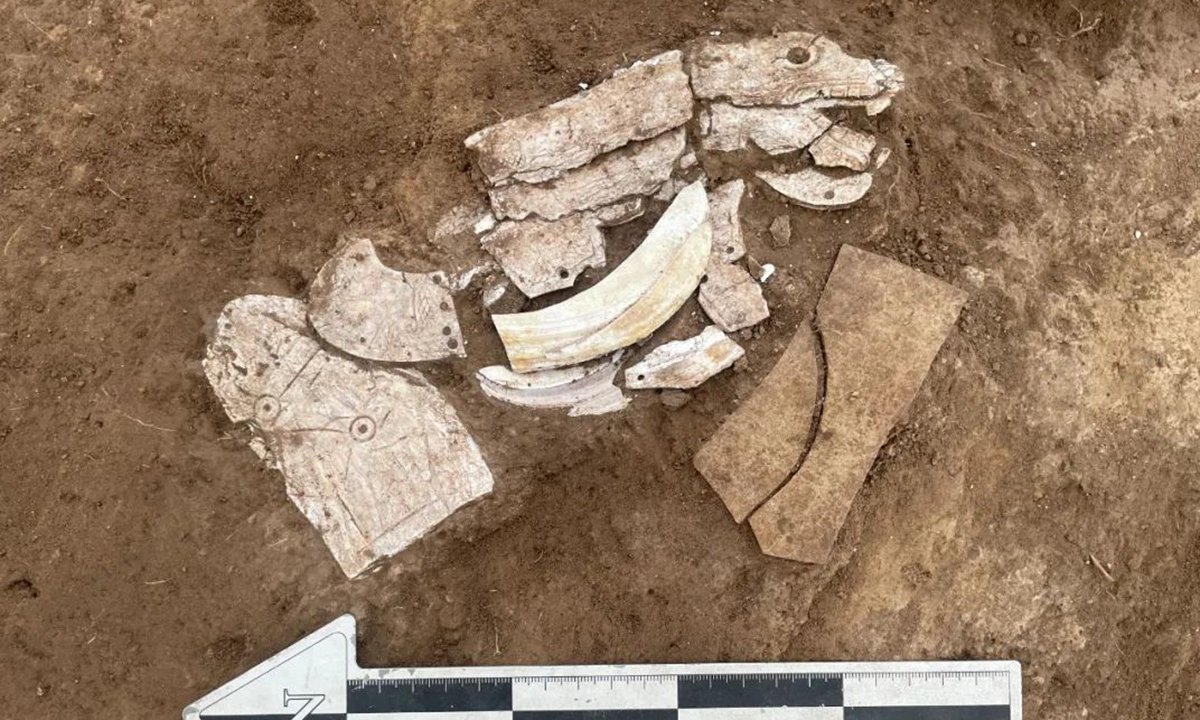In August 2023, archaeologists in Chifeng, in the Inner Mongolia Autonomous Region of North China, discovered a dragon made of mussel shells that is far older than the famous C-shaped jade dragon from the same Neolithic Hongshan Culture.
According to Song Jinshan, president of the Inner Mongolia Institute of Cultural Relics and Archaeology, the find is significant because it closes a gap in archaeologists' understanding of the dragon symbol in the early Hongshan Culture.
According to Hu Chunbo, the director of the excavation project at the Caitaopo Site in the Songshan district of Chifeng, the 20 centimeter-long dragon's head, body, and tail are assembled from a number of mussel shells like a jigsaw.
The uncovered artifacts, which were discovered next to two pottery ware fragments, are indicative of the Hongshan Culture.
In terms of carving methods and design, this mussel shell dragon differs significantly from the previously uncovered C-shaped jade dragon of the Hongshan Culture. The carving's teeth, tail, and other details are subtle, making it more delicate and realistic.
Furthermore, the shape is not a curled-body, C-shaped dragon but rather a spread-out representation of a dragon.
The previously found jade items from the Hongshan Culture, according to archaeologists, were placed at high-grade ceremonial structures or sites, whereas the dragon discovered during the current dig is a hint to the spiritual realm of people who lived in low-grade communities.
Northeast China's West Liao River Basin was home to the Neolithic Hongshan Culture. Hongshan sites, which date from roughly 4700 to 2900 BC, have been discovered in a region that stretches from the Inner Mongolia Autonomous Region to Liaoning. The carved jade produced by this civilisation is well-known.







